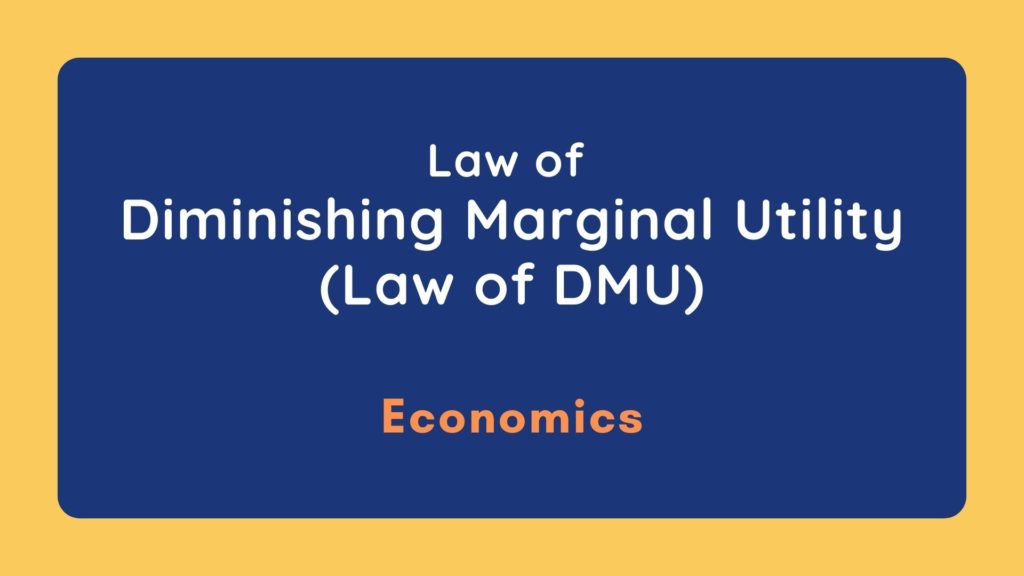Law of DMU (Diminishing Marginal Utility) | Free Economics Articles
Law of DMU
What is the Law of DMU?
What is the Law of Diminishing Marginal Utility?
Introduction:
This law was first proposed by Prof. Gossen but was discussed in detail by Prof. Alfred Marshall in his book ‘Principles of Economics’ published in 1890. The law of diminishing marginal utility is universal in character. It is based on the common consumer behaviour that utility derived diminishes with the reduction in the intensity of a want.
- Microeconomic Definition | Historical Review of Microeconomics
- Scope Or Nature of Microeconomics
- Exceptions of Law of Diminishing Marginal Utility
- Criticism of Law of Diminishing Marginal Utility

Statement of the Law of DMU:
According to Prof. Alfred Marshall, “Other things remaining constant, the additional benefit which a person derives from a given increase in his stock of a thing, diminishes with every increase in the stock that he already has.”
In other words, a marginal utility that any consumer derives from successive units of a particular commodity goes on diminishing as his or her total consumption of that commodity increases. In short, the more of a thing you have, the less you want to have more of it.
The below table explains the Law of Diminishing Marginal Utility.
| Units of Commodity x | Marginal Utility (MU) |
| 1 | 10 |
| 2 | 8 |
| 3 | 6 |
| 4 | 4 |
| 5 | 2 |
| 6 | 0 |
| 7 | -2 |
The table shows that marginal utility keeps on diminishing with an increase in consumption, further, it becomes zero and then negative.

Explanation of the Diagram :
In the above diagram, units of commodity x are measured on the X-axis, and marginal utility is measured on the Y-axis. Various points of MU are plotted on the graph as per the given schedule. When the locus of all the points is joined, the MU curve is derived.
MU curve slopes downwards from left to right which shows that MU goes on diminishing with every successive increase in the consumption of a commodity. When MU becomes zero, the MU curve intercepts the X-axis. Further consumption of a commodity brings disutility (negative utility) which is shown by the shaded portion in the diagram.
Example of Law of Diminishing Marginal Utility
Suppose a person is thirsty and the price of water is zero. He takes one glass of water which gives him great satisfaction. We can say the first glass of water has great utility for him.
He then takes a second glass of water. The utility of the second glass of water is less than that of the first glass of water. The utility declines because the edge of his thirst has been blunted to a great extent.
If he drinks the third glass of water, the utility of the third glass will be less than that of the second and so on. The utility goes on diminishing with the consumption of every successive glass of water till it drops down to zero. It is the position of the consumer’s equilibrium or maximum satisfaction.
If the consumer is forced further to take a glass of water, it leads to disutility causing the total utility to decline. The marginal utility will become negative. A rational consumer will stop taking water at the point at which marginal utility becomes negative even if the good is free.
In short, when a good is free, a consumer increases consumption of a good so long its additional units provide him positive marginal utility
Other Related Topics:


